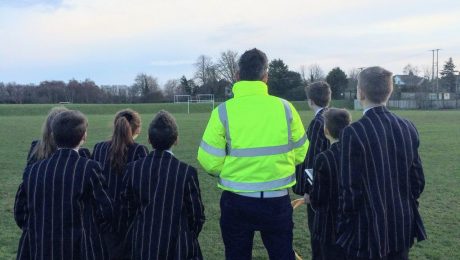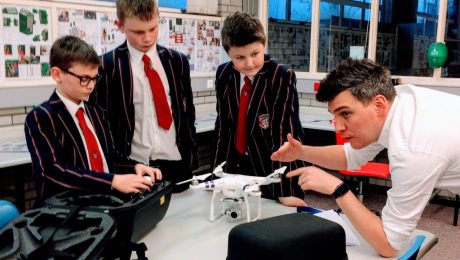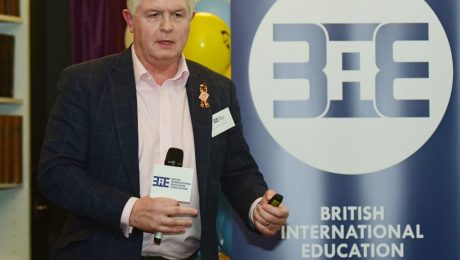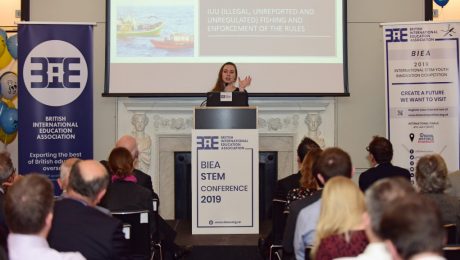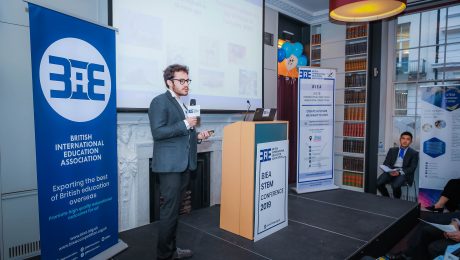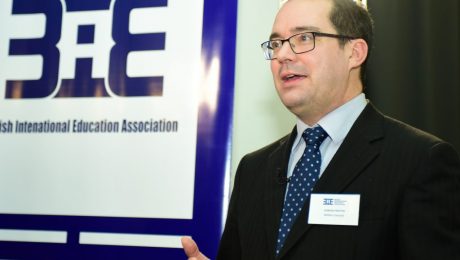Amazing entries from the first round of the BIEA 2019 STEM Competition
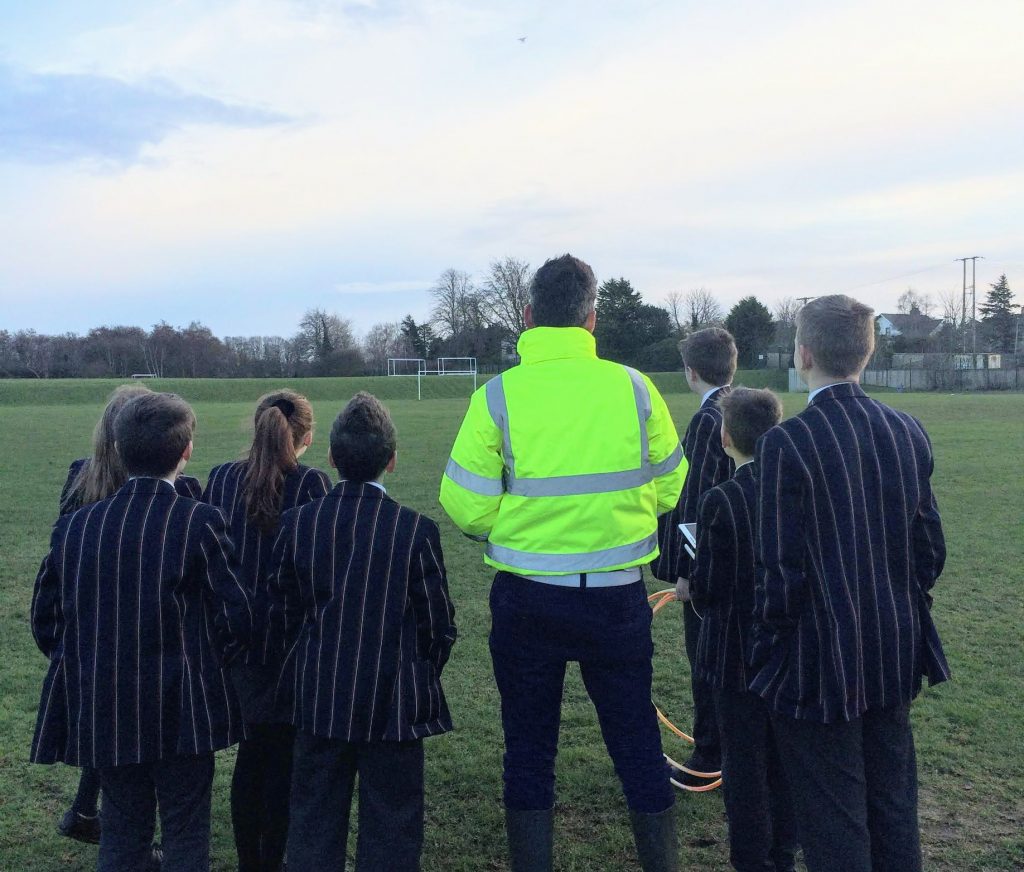
Students from the Coleraine Grammar School in Northern Ireland and their teammates flew their drone with their instructor starting their journey on the BIEA 2019 STEM competition.
BIEA was impressed with the entries submitted for the first round of the competition. It was obvious that many teams had worked hard to thoroughly research, design and write up their ideas for saving animal species from extinction.
The range of animals was impressive, and we were particularly impressed with entries that included animals relevant to the teams’ local area. This included the entry by Coleraine Grammar School on Basking Sharks that had been seen in Irish waters. They followed up their ideas with a visit from a local university lecturer to discuss drones. We were also impressed by Srednja skola Jablanica, a school in Bosnia, who focused on Bosnian wildlife, including the lynx, wolf and mouflon. Their report reflected some excellent planning and well-described division for team roles. Visakha Valley School chose the Red Panda for their project focus, and submitted an outstanding report including details about each of the team members and their supporting staff. One of the teams from Sheffield Park Academy also included details about team member roles in their project on the Tasmanian Devil.
Some teams incorporated innovative ways of experimentation for the report. One of the teams from St. Margaret’s School conducted a field test to find out how many pupils (‘animals’) could be counted by their drone at different heights in their project on Darwin Foxes. Team Endeavour, in their report on Sea Turtles, tested the strengths of different materials and measured the thrust of a motor to help determine their final drone specifications.
We also had a lot of teams using CAD and 3D printing to help with drone designs. Topkids Center included an outstanding design specification for their project on the Bactrian Camel. A team from Kent College 3D printed their design from their specifications, as did I Liceum Ogólnokształcące im. St. Dubois, who also developed a flight simulated path for their drone project on Zebra.
Some outstanding hand drawn specifications were also included – we were particularly impressed with the diagram for the Snow Leopard tracking drone by Alpha Preparatory School, along with the detailed exploded diagram of drone by the Westcliff High School for Boys and their project on the Amur Leopard, and the original drone design by the American International School of Cape Town who designed a drone with caterpillar tracks for tracking Savannah wildlife. The team from the Shanghai Foreign Language School Affiliated to SISU included in depth calculations for the drone range using 5G wireless signals around a Tibetan antelope animal reserve.
These are just a small selection of some of the amazing reports submitted for the first round of the competition. We would like to thank everyone who has worked so hard in the first round, and now we are very much looking for to seeing the great work continued in the second rounds of the competition.
- Published in News
45 Teams from 18 countries and regions advance to BIEA 2019 International STEM Competition
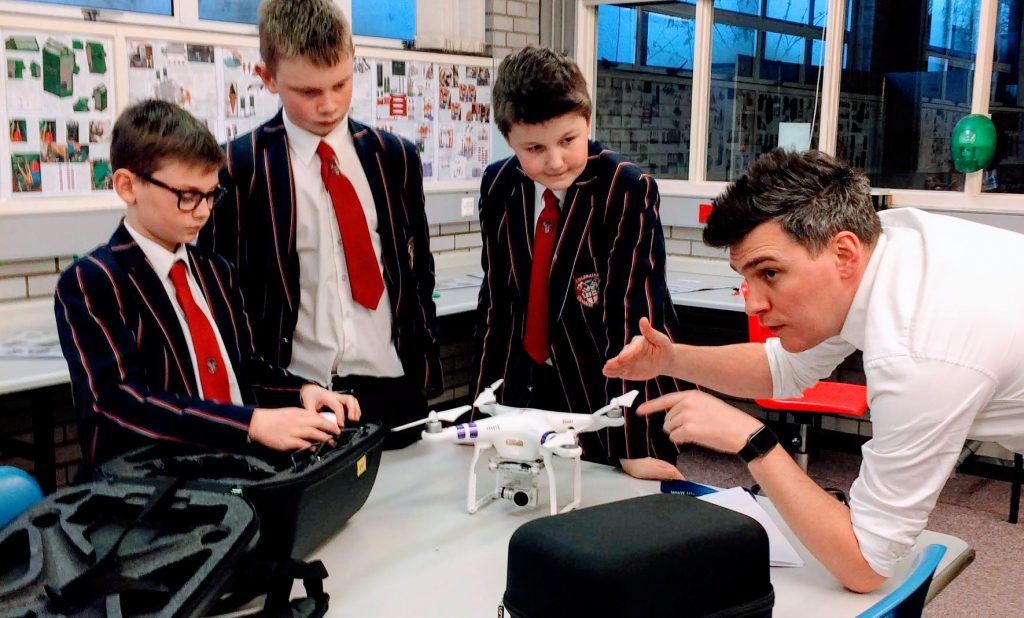
Early today, British International Education Association (BIEA) in association with Born Free Foundation announced the shortlist for BIEA 2019 International STEM Youth Innovation Competition.
Since the launch in January 2019, there has been huge interest from schools and teachers from around the world. With the competition reaching 30,000 schools globally, drawing applications from 34 countries and regions through the support of its partnership. After an intensive and rigorous marking process, 45 teams are through to the next round based on their qualification scores, representing 18 countries and regions including UK, China, USA, Australia, Canada, India, Kenya and many others.
Each year a theme connecting world issues and technology is chosen for the competition, which will be announced in January and the finals will be held in July. This year’s theme is “Fighting Extinction via Drone Technology”. Teams are asked to come up with a drone design to aid in the conservation of endangered species, and projects submitted in the first round focused on an enormous variety of endangered animals, including snow leopards, black rhinos, pangolins, turtles, elephants and many more.
In the next round, qualifying teams will modify/build a drone to reflect their report design ideas as laid down in the first round within a fixed budget. They are required to submit two videos by 4th June, one to demonstrate their drone in action and able to complete a set of tasks, a second video to visually present an outline of their project to date. In the meantime, BIEA STEM Ambassadors will visit shortlisted teams and support their innovation projects.
Upon successful submission of the videos, teams are invited to come to the international final at the London Royal Air Force Museum on 4th July, with a public showcase of their projects and presenting to a panel of expert judges. A grand prize of £5,000 is waiting for the top team, a variety of other prizes across the age categories will be awarded to participating teams.
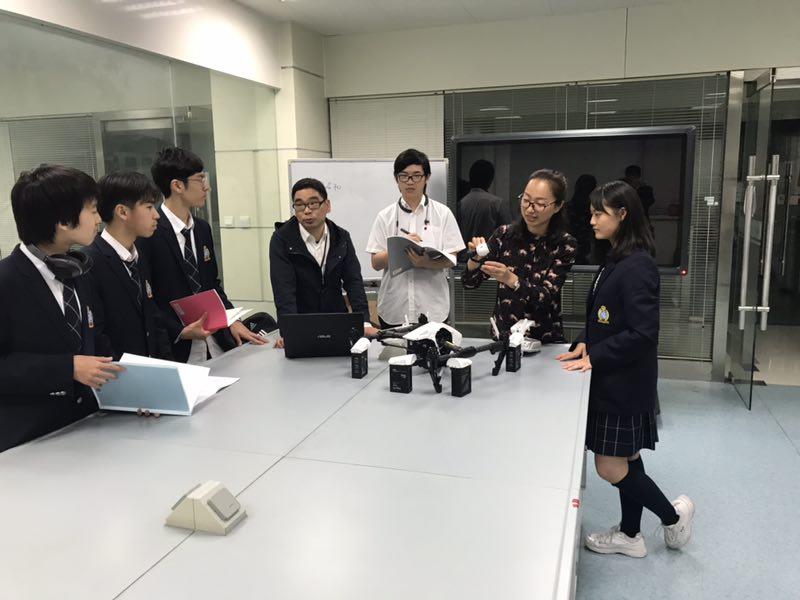
About the competition
The annual BIEA International STEM Youth Innovation Competition is BIEA’s flagship programme designed to encourage students to pursue study and careers in STEM. It presents a unique opportunity to motivate the next generation of leaders who will change the way we explore and connect in the world. One theme is chosen each year to reflect the pressing issues and challenges in today’s world and how technology could be used to in solving these challenges. The competition spans three age ranges: 9-11, 12-14 and 15-17. Entry teams are made up of 3-5 students supported by a teacher, where teamwork is an important component of the competition. There are five main components to the competition: report writing, innovation, presentation, Dragon’s Den style pitching and fixed tasks.
BIEA promotes friendly competition among teams from diverse socio-economic backgrounds, ethnicities, and geographies – from emerging towns in Nigeria to historical capital city of China. Numerous teams are engaging in fundraising campaigns in their communities to make their participation this year possible.
Quotes
“The overall quality of the reports was astounding, more so when we consider that many young people were submitting reports in a second language. In some cases, the standards of secondary research and innovative experimental investigations to gather primary data for drone specifications were worthy of undergraduates rather than secondary school students.”
Dr Alex Holmes, Lead Competition Judge
“BIEA aims to bring together educators and young people of all ages from around the world who share a passion for Science, Technology, Engineering and Mathematics (STEM). We hope our chosen topic will not only illustrate to the audience the importance of technological innovation when it comes to environmental protection, but also inspire the next generation of STEM graduates to put their minds to solving these pressing world issues”.
David Hanson, STEM Chairman, BIEA
“Wildlife is coming under increasing threat from human actions so Born Free is thrilled to be partnering with BIEA on this competition. It’s a chance to help the next generation understand the real-world application of STEM skills. How we can effectively use technology to protect and monitor wildlife populations could be the difference between extinction and survival for some of the world’s most threatened species.”
Laura Gosset, Head of Education, Born Free.
Follow and support your local team on the road to the International Finals using the official hashtag: #BIEACompetition
For more information about the BIEA International STEM Youth Innovation Competition and to view the complete list of the shortlisted teams, visit our site: www.bieacompetition.org.uk/announcement, or follow BIEA @BIEAeducation on Twitter.
- Published in News
Scientific and technological innovation will provide new ways of coexistence of humans and wildlife
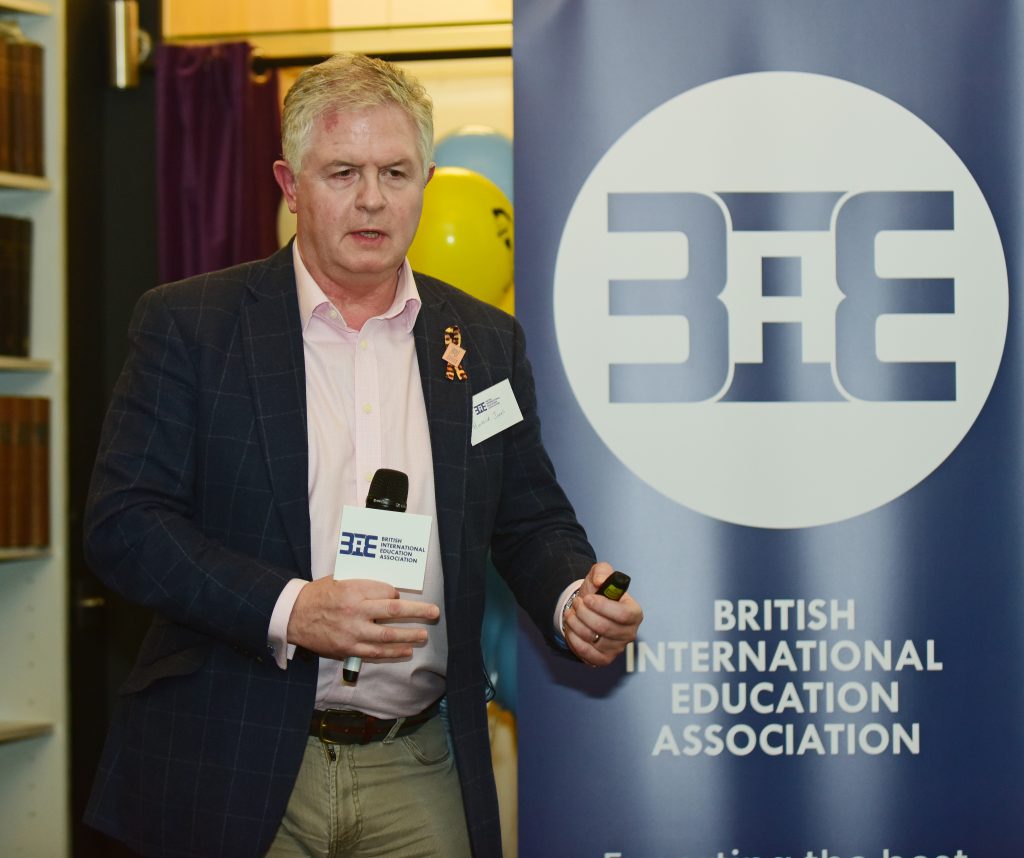
Global warming, disappearing forests, marine pollution, loss of biodiversity …we are facing serious problems of environmental collapse. What can humans do? The BIEA 2019 International Youth Competition partner and British wildlife conservation charity, the Born Free Foundation, has promoted the use of technology of in animal protection work, helping to facilitate a peaceful coexistence between humans and animals.
This view was outlined by the Born Free Foundation CEO, Howard Jones, and Dr Liz Greengrass in ‘Environmental Challenges Facing Science and Technology And How To Play A Role In The Protection Of Wild Animals, ’ their talk that was delivered at the inaugural BIEA STEM Conference in January 2019.
Their talk emphasised their excitement of being involved in animal protection. The Born Free Foundation described how humans and animals can co-exist through the use of aeronautical platforms, communication and tracking technology. These and other similar technologies are used in their programs to assist their animal protection strategies and conservation work. Drones are being used to track and record wild animal movements; communication, hi-tech security and other technological tools are also being advanced by the Born Free Foundation teams.
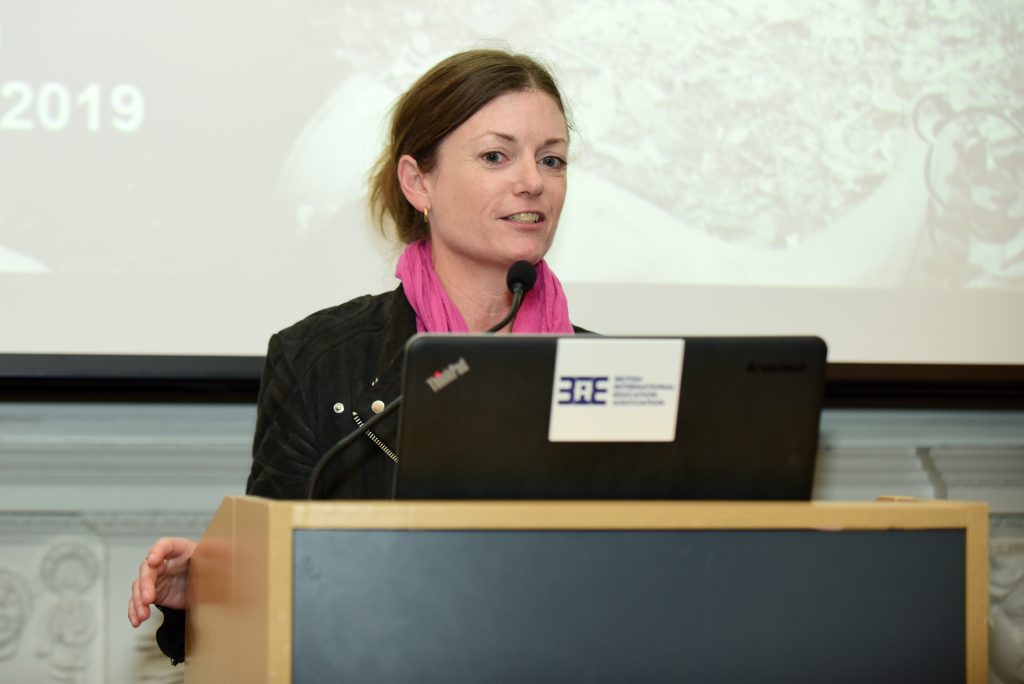
Dr. Liz Greengrass, The Born Free Foundation’s Head of Conservation, said that “Science and technology has a huge potential for helping in the support of endangered wildlife. With the involvement of the BIEA STEM Competition for teenagers, and its theme of using drone technology for wildlife conservation, young people will be encouraged and enthused to participate in conservation.”
The entry period for the BIEA STEM International Youth Competition is approaching its closure. International STEM workers, experts in wildlife conservation, international schools, students and parents have all been enthusiastically getting involved.
If you want to be involved in technological innovation, wildlife protection and be part of creating an exciting future for our planet, contact your teacher to submit a registration application. You can find the entry details on the 2019 BIEA STEM International Youth Competition official website.
In promoting human and wildlife coexistence, the BIEA hopes to engage the involvement of young people in the long-term support and sustainability of the environment. If we can do this by encouraging young people to do this and engage with new technologies at the same time, then all the better.
BIEA 2019 International Youth Branch Competition official website: www.bieacompetition.org.uk
The Born Free Foundation Profile
The Born Free Foundation was founded 35 years ago and is one of the world’s leading wildlife conservation charities. They have always been committed to advocating compassionate protection in order to improve the survival of endangered wild species and their ecosystems. We hope that this work with the BIEA will also have a positive impact for wildlife.
- Published in News
Innovative thinking alongside environmental awareness: how BIEA are encouraging young people in STEM to solve real world problems
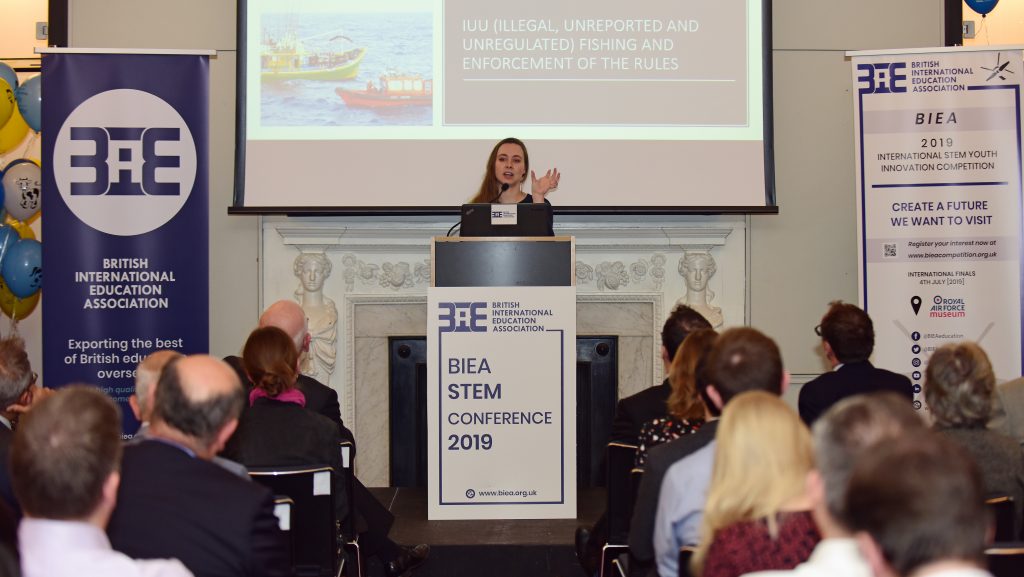
At the BIEA STEM Conference in January 2019, Melissa Schiele, Researcher from the Zoological Society of London (ZSL), gave a presentation on the topic ‘Development and assessment of a fixed-wing amphibious UAV for marine megafauna surveys and enforcement’. Melissa pointed out that through modifications of fixed-wing drones, investigation of marine mega-animals could be facilitated, although there remains a lot of room for efficiency improvement in investigating the UK’s marine protected areas due to the complex environment of its surrounding seas.
Melissa also described how her research team’s fixed-wing UAV had been modified. The modified drone is fully waterproof (marine) and includes two cameras. It is be controlled by both a laptop and a RC controller. In order to meet the requirements of surveying marine animals, which can involve extended flying periods, it has a long flight duration, allowing it to collect valuable information about marine animals. For example, it allows researchers to identify the species, and numbers of them, that frequent an area; it also allowed researcher to monitor illegal fishing activities from some distance away.
Melissa’s example inspired us in how application of STEM knowledge and innovation can help solve ecological problems through the novel use of technology. In recent years, educators have sought to encourage enthusiasm about STEM to the younger generations. Seeing how STEM is actually applied in this way in real world is an opportunity to cultivate innovative thinking in conjunction with environmental awareness. This fits alongside the aims of the BIEA 2019 International STEM Innovation Competition Contest with our theme ‘Fighting Extinction via Drone Technology;’ a competition already attracting participating teams of enthusiastic young people from around the world.
- Published in News
The future of the world belongs to young people

At the first STEM Conference of the British International Education Association (BIEA), Dr. Alex Holmes, the designer of the BIEA International STEM Youth Innovation Competition and Head of STEM, gave a presentation entitled: “The Future is Theirs”. She raised some very thought-provoking questions on how we might stimulate and cultivate STEM enthusiasm among young people.
Alex pointed out that one of the potentially serious problems for the future of STEM professions is the aging of current STEM professionals; this along with declining numbers of young entrants means that potential numbers are not enough to meet needs of future markets; therefore, society needs to cultivate students’ passion in STEM subjects. A further issue however is that for many students, the focus on theory and academic achievement in STEM subjects, and a perceived view that STEM subjects are ‘difficult’ or ‘elite’ subjects is also leading to a further decrease in numbers of students taking the subjects.
Taking these issues into account, it makes sense that educational institutions and organizations work together towards breaking down stereotypes of STEM subjects and stimulate an enthusiasm and passion, which might lead to an increase in uptake. Giving students the opportunity to think critically, consider novel solutions to problems, and accept new challenges are good ways to inspire young people’s STEM enthusiasm. Alex has pointed out that these form the fundamental rationale of the BIEA 2019 International STEM Youth Innovation Competition.
The 2019 BIEA STEM Competition invites young people (between 9 to 17 years old) from all over the world to form teams and work together to conceptualize how drone technology could be used to save endangered animals. The competition combines the application of STEM skills to help deepen innovative thinking in young people, whilst cultivating their ethical and environment outlook toward our planet. The entire competition process not only encourages young people to think about STEM and related careers, but also develops their transferable skills: problem-solving, communication and team-working. These capabilities are considered essential skills for positively engaging with the industrial, academic and employment market as the young people progress from school.
- Published in News
Help create a future we want to visit
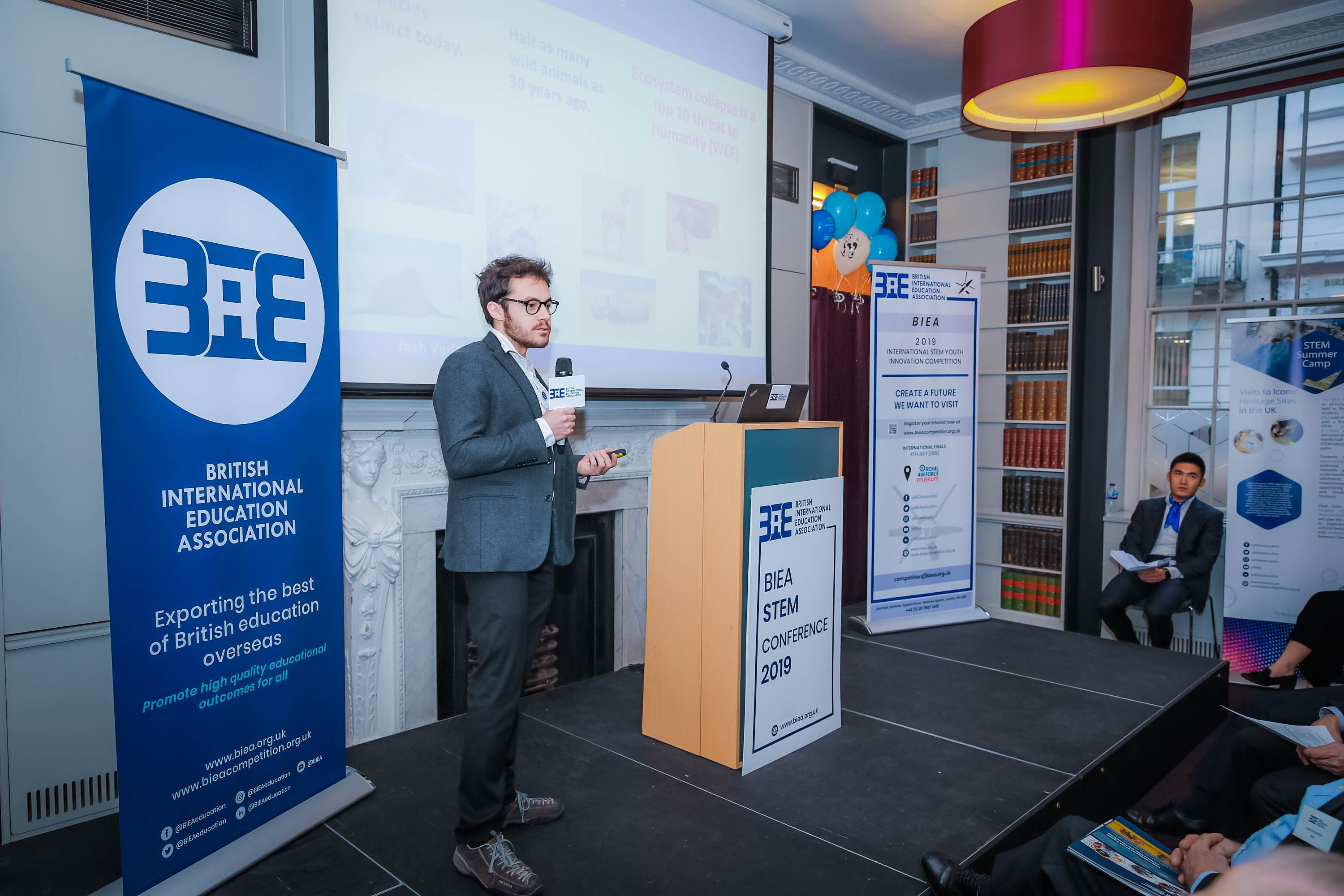
How can technology innovations help protect animals? In the past century alone, over 90 known species of animal have become extinct and the numbers rise every day that passes. The numbers of animal species in the wild are now only half of what they were 30 years ago and many species are now highly endangered. This collapse of fragile ecosystems is now one of the top ten threats facing humanity.
We know that the advancement of science and technology can improve the quality of life for humans, but technological innovation can also play an critical role in protecting the environment. This was the focus of the 2019 BIEA STEM Conference and is the rationale behind our 2019 International STEM Youth Innovation Competition.
How can technological innovation work towards protecting animals? We had the pleasure of listening to Joshua Veitch- Sharing, Researcher in the Liverpool John Moore University at our conference. In his presentation ‘Astro-ecology: astrophysics meets conservation biology’ he explained how the current crisis of wild animal populations comes not only from the deterioration of their natural environments, but also the malicious hunting done by people. He pointed out that although important work is done by anti-poaching rangers, there are limits to what a few people in the field can achieve. Joshua explained how using drones can assist people in the battle against poachers.
Drones can be used for identification of animal species and give meaningful insights into their population numbers and movements, especially using the high-altitude, infrared imaging function which provides data for counting animals both during the day and at night. He also described how the impressive infrared sensors on a drone can help anti-poaching rangers by detecting and pinpointing the position of hunters at night, allowing the rangers to .target their resources to the appropriate areas.
Joshua’s work gave us insight of how the diverse use of drones can support the work of animal protection officers and researchers. With the launch of our 2019 International STEM Youth Innovation Competition, ‘Fighting Extinction via Drone Technology,’ young people from all over the world now also have the chance to design and develop their own creative ideas for using drones to help protect endangered animals. Register now at https://bit.ly/2DIIGup and spread the word!
- Published in News
Chinese official praises British approach to STEM

The Embassy of the People’s Republic of China showed its support for BIEA’s efforts to combat the growing gap between the number of STEM students graduating and the growing number of STEM jobs needed in vital industries.
Minister Counsellor for Education Wang Yongli had the opportunity to speak in front of an assembled audience of international journalists, educators, government officials and STEM experts. He spoke of the traditional strength that China had in terms of STEM education and engagement with its young people. He related an old saying that if you can master chemistry you can master the world. He then followed this by drawing attention back to the reason for the event as a whole by stating that in the twenty-first century this is no longer enough to succeed. He praised the UK’s approach to STEM and in particular the more creative and innovative aspects that were missing from the Chinese approach. He finished his speech with a wish for closer cooperation between China and the UK in engaging young people in STEM.
This need for creativity has been reflected in the desire for Chinese educators to learn from British examples, particularly in early-years education which is a key aim of the BIEA E-league program. With China representing a formidable pool of global STEM talent, BIEA looks forward to the entry of Chinese teams into the 2019 BIEA International STEM Youth Innovation Competition to meet peers from around the world, make friends and swap ideas and innovations.
- Published in News
How to engage young people in STEM
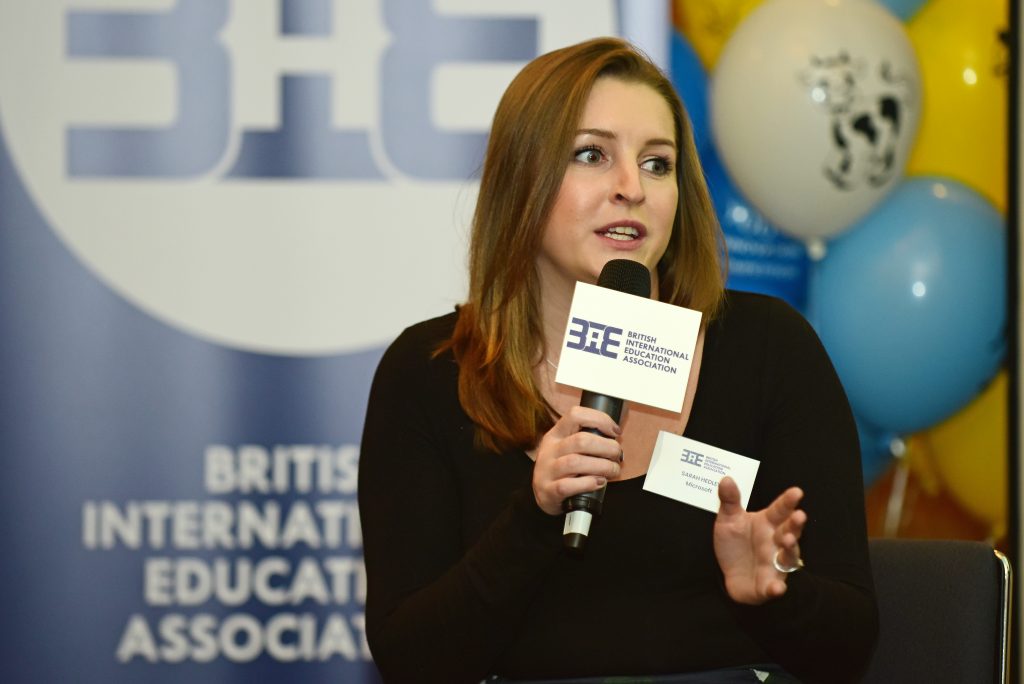
Sarah Hedley, the National Skills Lead for Microsoft in the UK took part in the panel discussion on how to engage young people in STEM education during the BIEA STEM Conference on the 15th of January.
The event aimed to promote STEM education to young people and try to draw attention to the skills gap that is developing between the number of STEM graduates and the growing number of STEM jobs that are needed to sustain the economy. Sarah’s position at Microsoft, a key player in tech education and innovation around the world meant that she had some key insights as to the challenges faced by young people when engaging in STEM. In particular, Sarah focused on female participation in STEM and how at the age of 7 girls are keen to take part but by the age of 12, they are far less willing. The panel suggested increasing access to female role models in STEM and smashing preconceptions across STEM could lead to increased diversity which would benefit society as a whole.
Sarah also talked about how companies like Microsoft and the BSA, among others, use their resources to make STEM fun by coming into schools and teaching STEM skills in a way that young people find relatable and engaging. This was widely accepted by the panel as a key way to engage young people in subjects that traditionally are seen as fairly dry.
- Published in News
British Council shows support for BIEA

The British International Education Association was pleased to host members of the British Council during its first STEM Conference on the 15th of January 2019. BIEA has a long history of working closely with the British Council, sharing the goal of exporting the best of British educational practice overseas.
Science Advisor: STEM and Public Engagement, Adrian Fenton represented the British Council during the panel discussion moderated by New Scientist Magazine on how to engage young people in STEM. It was widely agreed that young people could be encouraged into STEM education through making the perception of the subject fun through outreach and practical education that is supported by organisations such as the British Council around the world. It was also agreed that young people needed to be aware of the multitude of career options that were open to them, outside of traditional STEM paths and that similarly, access to role models could help drive up STEM engagement.
BIEA looks forward to working especially closely alongside the British Council in China though 2019 as it launches its flagship E-League and S-League programmes in the country. BIEA is confident that the global expertise that the British Council brings to the table when it comes to promoting and sharing British values and education practices around the world will be invaluable for exporting BIEA educational programs to Chinese educators.
- Published in News
BIEA hosts Department for International Trade

On the 15th of January 2019, the British International Education Association hosted several members of the Department for International Trade at its first STEM Conference. Aiding BIEA’s to export the best of British education overseas, the Department for International Trade has been set up specifically to deal with British global trade in whatever environment post-Brexit Britain finds itself in.
Head of Education Geoff Gladding took the opportunity to say a few words before the official launch of the 2019 BIEA International STEM Youth Innovation Competition. He thanked BIEA for helping British education to leave a footprint around the world and continuing to boost the prestige and value of this crucial element of British soft power, particularly in the highly topical STEM field.
BIEA looks forward to continuing to deepen and expand its relationship with the Department, particularly when it comes to exporting the best of modern British educational practice into China’s booming education sector. 2019 will see the official launch of BIEA’s flagship E-League and S-League programmes in China and BIEA looks forward to cooperating with the Department for International Trade in promoting these programmes to Chinese educators throughout the country.
- Published in News

